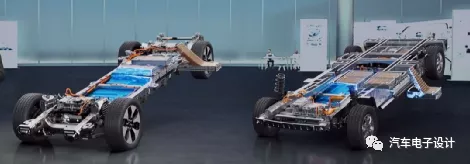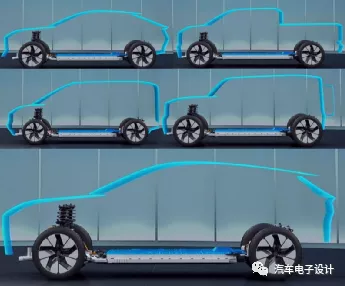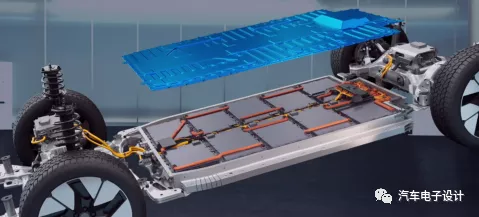In Biden’s new policy, one important aspect is clean energy. In the latest proposal of the “CLEAN ENERGY FOR AMERICA ACT”, there are subsidies and exit provisions for electric vehicles. Under this plan, the US could become the paradise of electric vehicles with a 30% tax rebate and a 50% penetration rate for passenger cars before the exit. Therefore, Ford expects that by 2030, 40% of its global sales will come from electric vehicles, and it will increase its investment in the electric vehicle field to more than $30 billion by 2025. Two electric vehicle platforms have been launched, one for full-size pickup trucks and SUVs, and the other for cars and small SUVs. The platform on the left is not a platform itself, but rather a two-layer stacked module design of Ford’s current design.

The probability of this bill passing is still very high. Now the US is following China in the development of new energy. If the US does not develop in this field, their technology and industrial reserves will be in trouble. This is a significant political consideration. We will see the voting results of this bill in a few days.

Ford’s Electric Vehicle Platform
Based on the currently available information, Ford’s electric vehicle platform is differentiated in the length of the battery system (configured according to the number of modules).

The video shows the following:
1) The battery is designed according to the module structure, which means that it has taken one step forward based on the previous path of the soft-pack battery cells. After cooperating with SK, Ford did not choose the long-cell scheme but instead increased the height of each cell and stacked them in the length direction of the battery.
2) This battery pack and the general wireless BMS are different in that it adopts a centralized connection method. All the cell samplings are connected from the middle and then converge in the centralized BMS controller.Ford has an interesting battery layout plan, establishing a new global battery innovation center called Ford Ion Park and assembling an expert team to vertically integrate cell technology. The first step is to vertically integrate battery technology with SK Innovation to form a joint venture called “BlueOvalSK” in the United States and invest in two factories to produce cells and battery packs. In terms of battery series, Ford named its future batteries IonBoost lithium batteries, distinguishing them from existing platform technology, as well as IonBoost Pro phosphate iron lithium batteries developed for commercial vehicles and solid-state battery technology for high energy density (investing in Solid Power solid-state batteries). Overall, it appears that the plan is moving in several steps.
Note: It is not clear whether Ford is using phosphate iron lithium on soft packs or some other processing.
We compare the current F150 module design with this platform module design and find that there is basically no difference. In other words, Ford has basically solidified the developed technology and transferred it to the next generation of platforms. In this sense, South Korea’s battery industry has benefited the most from electric vehicle development in the United States, with GM+LG, Ford+SK, and Tesla also increasing their purchases from LG. If Biden’s proposal is passed, the US electric vehicle market is expected to increase from its current 200,000+ to over 500,000, eventually reaching 2 million.
In other words, currently, with the regional strategy of accelerating the electrification of vehicles, the overall lock-in of resources such as lithium, nickel, and cobalt will be subject to significant changes. We will review this issue over the weekend. I am thinking of one thing: if the operation continues in this way, Toyota and Honda in Japan will inevitably have to accelerate the process of landing pure EVs in the United States.


 Under the strategic adjustment of the Biden administration, the United States seems to be starting to systematically support the electric vehicle and battery industry like Europe does. Considering the scale of this demand from the layout, it is bound to lead to the continuous expansion of the battery industry, and the demand for resources needs to be fulfilled.
Under the strategic adjustment of the Biden administration, the United States seems to be starting to systematically support the electric vehicle and battery industry like Europe does. Considering the scale of this demand from the layout, it is bound to lead to the continuous expansion of the battery industry, and the demand for resources needs to be fulfilled.
This article is a translation by ChatGPT of a Chinese report from 42HOW. If you have any questions about it, please email bd@42how.com.
